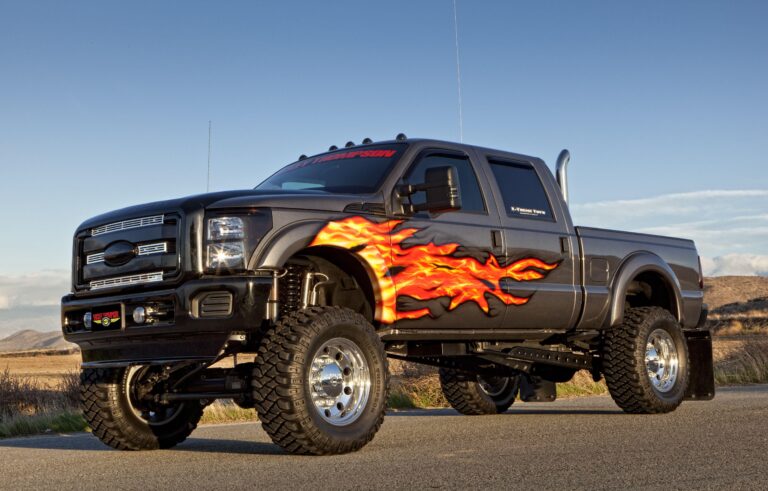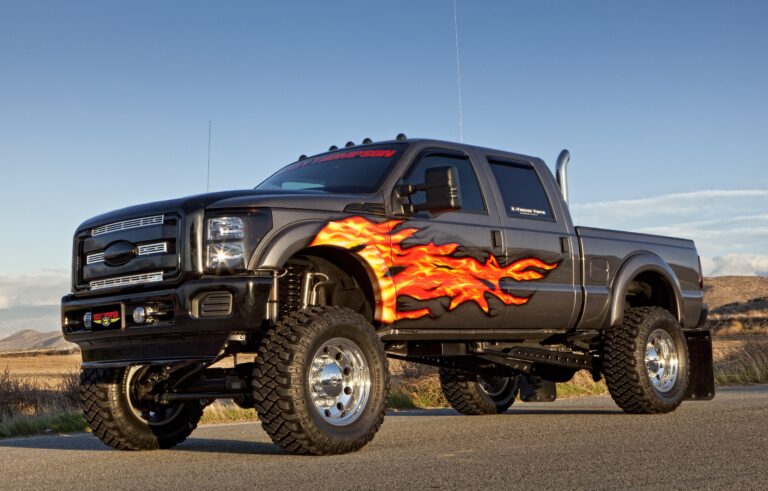Best Car Jack Brand: Elevating Your Vehicle Maintenance with Confidence
Best Car Jack Brand: Elevating Your Vehicle Maintenance with Confidence cars.truckstrend.com
In the realm of automotive maintenance and emergency roadside assistance, a car jack is not just a tool; it’s a fundamental piece of equipment that dictates safety, efficiency, and the very possibility of performing essential tasks like changing a flat tire or undertaking routine inspections. Choosing the "best car jack brand" isn’t merely about finding the most expensive or feature-rich option; it’s about selecting a reliable, durable, and safe lifting device that perfectly matches your vehicle’s needs and your usage requirements.
A high-quality car jack from a reputable brand can mean the difference between a smooth, safe operation and a dangerous, frustrating experience. It’s an investment in your safety and the longevity of your vehicle. This comprehensive guide will delve into what makes a car jack stand out, explore the top brands, offer practical advice on usage and maintenance, and help you navigate the landscape of options to find your ideal lifting companion.
Best Car Jack Brand: Elevating Your Vehicle Maintenance with Confidence
Understanding Car Jacks: Types and Their Applications
Before we dive into brands, it’s crucial to understand the different types of car jacks available, as the "best" brand often specializes in certain categories. Each type is designed for specific scenarios and vehicle types.
-
Floor Jacks (Trolley Jacks):
- Description: These are the most common jacks found in garages and workshops. They feature a long handle, a large base, and wheels, allowing them to roll under a vehicle. They use hydraulic fluid to lift.
- Pros: High lifting capacity (typically 1.5 to 5 tons), good stability, relatively fast lifting, easy to maneuver. Available in steel (heavy-duty, durable) and aluminum (lighter, more portable). Low-profile versions exist for sports cars.
- Cons: Can be heavy and bulky, not ideal for roadside emergencies unless you have ample trunk space.
- Best for: Garage use, frequent maintenance, larger vehicles, general DIY.

-
Bottle Jacks:
- Description: Compact, vertical hydraulic jacks resembling a bottle. They lift by extending a ram upwards.
- Pros: Very high lifting capacity for their size (up to 20+ tons), compact, good for heavy trucks, RVs, and SUVs.
- Cons: Limited lift height, can be unstable on uneven surfaces, not suitable for vehicles with low ground clearance.
- Best for: Heavy-duty vehicles, compact storage, where space is a premium but height isn’t.

-
Scissor Jacks:
- Description: Often included as standard equipment with new cars, these mechanical jacks operate by turning a screw mechanism, causing two scissor-like arms to extend and lift the vehicle.
- Pros: Very compact, lightweight, inexpensive, good for emergency tire changes.
- Cons: Slow to operate, limited lifting capacity, can be unstable, requires more effort.
- Best for: Emergency roadside use, light passenger vehicles, temporary solutions.
-
Hi-Lift Jacks (Farm Jacks):
- Description: Tall, mechanical jacks with a long steel bar and a ratcheting mechanism.
- Pros: Extremely high lift, versatile for off-road recovery, can be used for winching, spreading, or clamping.
- Cons: Can be dangerous if not used properly, heavy, unstable for regular vehicle maintenance, only suitable for vehicles with specific lift points (like off-road bumpers).
- Best for: Off-road vehicles, farm use, heavy-duty recovery.
-
Air/Exhaust Jacks:
- Description: Inflatable bags that lift a vehicle using compressed air (from an air compressor) or exhaust gas.
- Pros: Excellent for soft or uneven terrain (sand, mud), very fast lift, large contact area.
- Cons: Susceptible to punctures, can be bulky when deflated, requires a running engine or compressor.
- Best for: Off-roading, specialized recovery in challenging environments.

What Makes a Car Jack "Best"? Key Features to Look For
The "best" car jack isn’t a one-size-fits-all answer. It’s the jack that combines essential features to meet your specific safety and operational needs.
- Lifting Capacity (Weight Rating): This is paramount. Your jack’s capacity must exceed your vehicle’s heaviest corner weight. A good rule of thumb is to choose a jack with a capacity of at least three-quarters of your vehicle’s Gross Vehicle Weight Rating (GVWR), or ideally, its entire GVWR. Most passenger cars can use a 2-ton or 2.5-ton jack, while SUVs and light trucks may need 3-ton or 4-ton jacks.
- Lifting Height (Min/Max):
- Minimum Height (Saddle Height): Crucial for low-profile vehicles (sports cars, sedans). Ensure the jack fits under your car’s jack points.
- Maximum Height: Make sure it lifts your vehicle high enough to perform the desired work and accommodate jack stands.
- Build Material:
- Steel: Heavier, more durable, generally less expensive, common for high-capacity floor jacks.
- Aluminum: Lighter, more portable, corrosion-resistant, typically more expensive, preferred for racing jacks or those needing frequent transport.
- Hybrid (Steel/Aluminum): Offers a balance of strength and weight.
- Safety Features:
- Overload Valve: Prevents lifting more than the rated capacity, protecting the jack and preventing accidents.
- Safety Lock/Pin: Locks the jack in place once lifted, providing an extra layer of security.
- Wide Base/Sturdy Construction: Enhances stability, reducing the risk of tipping.
- Rubber Saddle Pad: Protects your vehicle’s frame or pinch welds from damage.
- Bypass System: Prevents ram overextension.
- Ease of Use & Maneuverability:
- Pumping Mechanism: Smooth, efficient hydraulic pump (for hydraulic jacks).
- Handle Length: Longer handles provide better leverage and ease of pumping. Two-piece handles are good for storage.
- Wheels (for Floor Jacks): Large, sturdy wheels (especially steel casters) for easy positioning and movement.
- Portability & Storage: Consider the jack’s weight and dimensions if you plan to carry it in your vehicle or have limited garage space.
- Durability & Longevity: Look for robust construction, quality seals (for hydraulic jacks), and a solid warranty. A well-maintained quality jack can last for decades.
- Brand Reputation & Warranty: A reputable brand often signifies better quality control, readily available parts, and reliable customer service. A strong warranty indicates the manufacturer’s confidence in their product.
Top Contenders for "Best Car Jack Brand"
While "best" is subjective, certain brands consistently deliver quality, performance, and reliability across different categories of car jacks.
-
Arcan:
- Reputation: Known for professional-grade, heavy-duty floor jacks. They offer excellent build quality, high capacities, and smooth operation.
- Strengths: Durability, fast lift mechanisms, often feature low-profile designs and long reach. Popular with mechanics and serious DIYers.
- Typical Offerings: Steel and aluminum floor jacks (e.g., XL2T, ALJ3T).
-
Pittsburgh (Harbor Freight Tools):
- Reputation: A popular choice for DIY enthusiasts due to its aggressive pricing and surprisingly decent performance.
- Strengths: Affordability, wide range of capacities and types (floor, bottle, transmission jacks). Offers good value for money for occasional use.
- Typical Offerings: Steel floor jacks, aluminum racing jacks, bottle jacks.
-
Torin (Big Red):
- Reputation: A globally recognized brand offering a vast array of lifting equipment. Known for providing good quality at competitive prices.
- Strengths: Versatility, availability in many auto parts stores, decent durability for home use. They make everything from floor jacks to bottle jacks and jack stands.
- Typical Offerings: Hydraulic floor jacks, bottle jacks, scissor jacks.
-
ACDelco:
- Reputation: While primarily known for automotive parts, ACDelco also produces reliable and well-built lifting equipment. Often considered OEM-quality.
- Strengths: Dependability, good safety features, suitable for a wide range of vehicles.
- Typical Offerings: Hydraulic floor jacks, bottle jacks.
-
Hein-Werner:
- Reputation: A premium, made-in-USA brand highly regarded by professional mechanics for its exceptional durability and longevity.
- Strengths: Top-tier build quality, robust components, designed for continuous heavy use. An investment that lasts.
- Typical Offerings: Heavy-duty hydraulic floor jacks (e.g., HW93652).
-
Powerbuilt:
- Reputation: Innovative brand known for its "All-in-One" jack stands, combining a jack and a jack stand into a single unit.
- Strengths: Unique space-saving designs, good for home garage use where efficiency is key.
- Typical Offerings: Bottle jack stands, specialized lifting tools.
-
Sunex Tools:
- Reputation: Another professional-grade brand that offers high-quality, durable lifting solutions.
- Strengths: Fast lifting, robust construction, often preferred by automotive professionals.
- Typical Offerings: Low-profile floor jacks, heavy-duty jacks.
How to Safely Use a Car Jack: A Step-by-Step Guide
Using a car jack correctly is as important as choosing a good one. Safety should always be your top priority.
-
Prepare the Work Area:
- Flat, Stable Surface: Always work on a hard, level, non-slip surface (concrete or asphalt). Never on dirt, grass, gravel, or an incline.
- Engage Parking Brake: Ensure the parking brake is fully engaged.
- Wheel Chocks: Place wheel chocks on the wheels that will remain on the ground, opposite the end of the vehicle being lifted. For example, if lifting the front, chock the rear wheels.
- Vehicle in Park/Gear: For automatic transmissions, put the car in "Park." For manual, put it in first or reverse gear.
-
Locate Jack Points:
- Consult Your Vehicle Manual: This is critical. Every vehicle has specific, reinforced jack points designed to safely support its weight. Using the wrong point can damage your vehicle or cause it to slip.
- Common jack points are reinforced areas on the frame, pinch welds, or suspension components.
-
Position the Jack:
- Slide the jack under the designated jack point. Ensure the saddle of the jack is centered and securely contacting the jack point. Use a rubber pad on the saddle to protect the vehicle’s underside.
-
Lift the Vehicle:
- Slowly and steadily pump the jack handle, watching the vehicle rise. Ensure the jack remains stable and the vehicle is lifting evenly.
- Lift only high enough to allow room for your jack stands and to perform the task.
-
Insert Jack Stands (ABSOLUTELY ESSENTIAL!):
- NEVER work under a vehicle supported only by a jack. Jacks are designed for lifting, not for sustaining loads for extended periods.
- Once the vehicle is at the desired height, slide jack stands under the vehicle’s designated jack stand points (usually near the jack points, also found in your manual).
- Adjust the jack stands to match the height of the jack and engage their safety locks.
- Slowly lower the jack until the vehicle rests securely on the jack stands. The jack can then be removed or kept lightly touching for an extra layer of safety.
-
Perform Work:
- Now that the vehicle is securely supported, you can safely perform your maintenance or repair.
-
Lower the Vehicle:
- Raise the vehicle slightly with the jack to take the weight off the jack stands.
- Remove the jack stands.
- Slowly and carefully release the pressure on the jack (usually by turning a valve or twisting the handle), allowing the vehicle to descend smoothly to the ground.
- Once the vehicle is fully down, remove the jack and chocks.
Important Considerations Beyond the Jack
- Jack Stands: As emphasized, these are non-negotiable safety equipment. Always use jack stands with a capacity equal to or greater than your jack’s capacity.
- Wheel Chocks: Simple but effective in preventing unintended rolling.
- Creeper/Floor Mat: For comfort and ease of movement when working underneath the vehicle.
- Personal Protective Equipment (PPE): Gloves to protect your hands, and eye protection to guard against debris.
- Torque Wrench: Essential for correctly tightening lug nuts after tire changes to the manufacturer’s specifications.
Challenges and Solutions
- Low-Profile Vehicles: Solution: Invest in a "low-profile" floor jack specifically designed to fit under vehicles with minimal ground clearance.
- Heavy Vehicles/Trucks/SUVs: Solution: Opt for a high-capacity floor jack (3-5 tons) or a robust bottle jack. Ensure its maximum lift height is sufficient.
- Uneven Surfaces: Challenge: Never work on severely uneven ground. If slightly uneven, use a jack with a wider base for more stability, and always double-check stability before lifting. Prioritize moving to a level surface if possible.
- Hydraulic Fluid Leaks/Loss of Pressure: Solution: For hydraulic jacks, check for leaks regularly. If losing pressure, it might need a fluid top-up or seal replacement. Refer to the manufacturer’s maintenance guide.
- Jack Creeping/Slipping: Solution: Ensure the jack is on a perfectly flat, non-slip surface. Always use jack stands as the primary support, not the jack itself.
Price Table: Representative Car Jack Brands & Types
Note: Prices are approximate and can vary significantly based on retailer, sales, specific model features, and current market conditions. Always check current pricing.
| Brand | Model Type (Example) | Typical Capacity | Approx. Price Range (USD) | Key Feature/Notes |
|---|---|---|---|---|
| Arcan | 3-Ton Low Profile Floor Jack | 3 Tons | $200 – $350 | Professional grade, fast lift, durable, steel or aluminum |
| Pittsburgh | 3-Ton Steel Floor Jack | 3 Tons | $100 – $150 | Excellent value for DIYers, widely available |
| Torin (Big Red) | 2.5-Ton Aluminum Racing Jack | 2.5 Tons | $120 – $200 | Lightweight, portable, good for track or roadside use |
| ACDelco | 2-Ton Floor Jack | 2 Tons | $80 – $120 | Reliable, compact, good for standard passenger cars |
| Hein-Werner | 2-Ton Hydraulic Floor Jack | 2 Tons | $400 – $600+ | Premium quality, Made in USA, extreme durability |
| Powerbuilt | 6000lb Bottle Jack Stand | 3 Tons (per pair) | $60 – $100 | Innovative 2-in-1 design, space-saving |
| Sunex Tools | 3-Ton Low Profile Floor Jack | 3 Tons | $300 – $450 | Professional performance, strong, reliable |
| Big Red | 12-Ton Bottle Jack | 12 Tons | $40 – $80 | High capacity in a compact form, good for heavy vehicles |
| Hi-Lift Jack | 48-inch Hi-Lift Jack | 7000 lbs | $100 – $150 | Off-road recovery, versatile, but requires careful use |
Frequently Asked Questions (FAQ)
Q: How much weight capacity do I need for my car jack?
A: It’s recommended that your jack’s capacity is at least 75% of your vehicle’s Gross Vehicle Weight Rating (GVWR), or ideally, equal to or greater than the GVWR. For most passenger cars, a 2-ton or 2.5-ton jack is sufficient. For SUVs and trucks, a 3-ton or 4-ton jack is safer. Always check your vehicle’s manual for its GVWR.
Q: Can I use a car jack without jack stands?
A: ABSOLUTELY NOT. This is the most crucial safety rule. A car jack is designed for lifting, not for prolonged support. Always use appropriately rated jack stands to support the vehicle once it’s lifted. Working under a vehicle supported only by a jack is extremely dangerous and can lead to severe injury or death if the jack fails.
Q: What’s the difference between steel and aluminum floor jacks?
A: Steel jacks are generally heavier, more durable, and less expensive, often preferred for heavy-duty garage use. Aluminum jacks are significantly lighter, more portable, and corrosion-resistant, making them ideal for roadside emergencies or for those who need to transport their jack frequently. Aluminum jacks typically cost more.
Q: Where are the jack points on my car?
A: Always consult your vehicle’s owner’s manual for the precise location of jack points and jack stand points. Using incorrect points can damage the vehicle’s frame, suspension, or fuel lines. Generally, they are reinforced areas on the vehicle’s frame or pinch welds, often indicated by small arrows or notches.
Q: How do I maintain a hydraulic jack?
A: Regular maintenance extends a hydraulic jack’s life. Keep it clean and free of dirt and debris. Check the hydraulic fluid level periodically (refer to your manual for the correct type of fluid and filling instructions). Store it in a dry place to prevent rust. If the jack feels spongy or loses pressure, it may need bleeding or a fluid top-up.
Q: Are cheap car jacks safe?
A: While a higher price often correlates with better quality and safety features, not all inexpensive jacks are inherently unsafe. However, very cheap, no-name jacks might use lower-quality materials or lack essential safety features like overload valves. It’s crucial to check reviews, look for safety certifications (like ASME PASE), and always adhere to weight limits and proper usage procedures, especially using jack stands. Investing a bit more in a reputable brand is often a wise decision for safety and longevity.
Conclusion
Choosing the "best car jack brand" is a decision that merges your specific needs with a brand’s reputation for safety, durability, and performance. Whether you’re a professional mechanic, a dedicated DIYer, or simply someone who wants to be prepared for a roadside emergency, investing in a high-quality car jack is paramount.
Remember that the "best" jack for you will depend on your vehicle type, the tasks you plan to perform, your storage space, and your budget. Prioritize lifting capacity, safety features, and robust construction. And most importantly, always couple your jack with sturdy jack stands and follow safe operating procedures. By doing so, you’ll not only equip yourself with a reliable tool but also ensure your safety and confidence when working on your vehicle.





